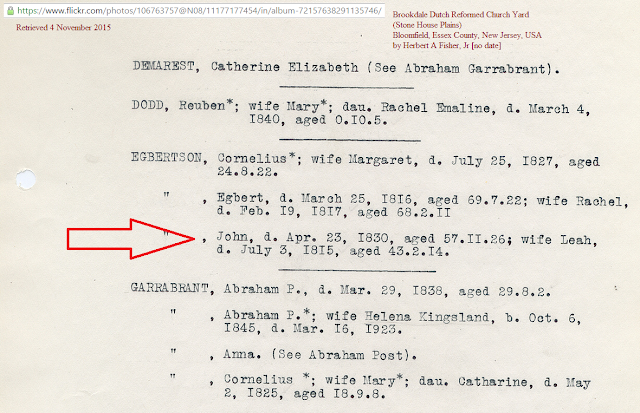This is great news from a group called Reclaim the Records.
The covered years and types of records:
---Birth Index 1901, 1902, and 1903
---Marriage Index, Grooms, 1901, 1902, 1903
---Marriage Index, Brides, 1901-1914
---Death Index 1901, 1902, and 1903
According to their announcement, Reclaim the Records purchased copies of the microfilm rolls from the New Jersey State Archives. The images will be digitized soon and posted online for free at Internet Archive.
These are indexes and not the actual certificates of birth, marriage, and death. You will still need to request a copy (for a fee) from the Archives or someone who does research on site.
Before a trip to the Archives, I use the online indexes so I can jump directly into the rolls of certificates. Adding years 1901-1903 will be a great help.
Why these years? Well, New Jersey has had funny ways of organizing their vital records over the centuries. A proper discussion requires more than a paragraph, so for now, I'll just write that it can be confusing. Below is an example from the Index of Births covering June 1, 1878 through June 30, 1890, just so you get an idea of what we're dealing with.
[You can search online indexes of events prior to 1901 online at Family Search, Ancestry, and the State Archives index (Google it- the URL keeps changing). Remember that these online indexes are not records unto themselves. The dates are wrong sometimes.]
Around 1900, New Jersey decided to organize its vital records using a different system: Year by year, from January 1 through December 31, in order of date received. In 1904, the birth and death certificates are organized by year, then surname, eliminating the need for a yearly index. To find a birth or death, you search the actual certificates for a surname year by year. [1923 is the final year of births currently housed at the Archives. The death certificates now reach to 1955, but the alphabetical organization gave way to dates starting in 1949.]
Marriages are different because there are two parties, usually with different surnames. When marriage certificates became organized by surname ahead of date, the groom's surname was used; hence, an index of brides was needed. This is why the Index of Brides extends into 1914 while the other indexes are only from 1901-1903. [The Index of Brides at the Archives extends into 1938.]
 |
| 1903 Index of Births, New Jersey |
| 1901-1903 Index of Brides, New Jersey |
 |
| 1902 Index of Deaths, New Jersey |
 |
| 1903 Index of Deaths, New Jersey |
 |
| 1910-1914 Index of Brides, New Jersey |





















